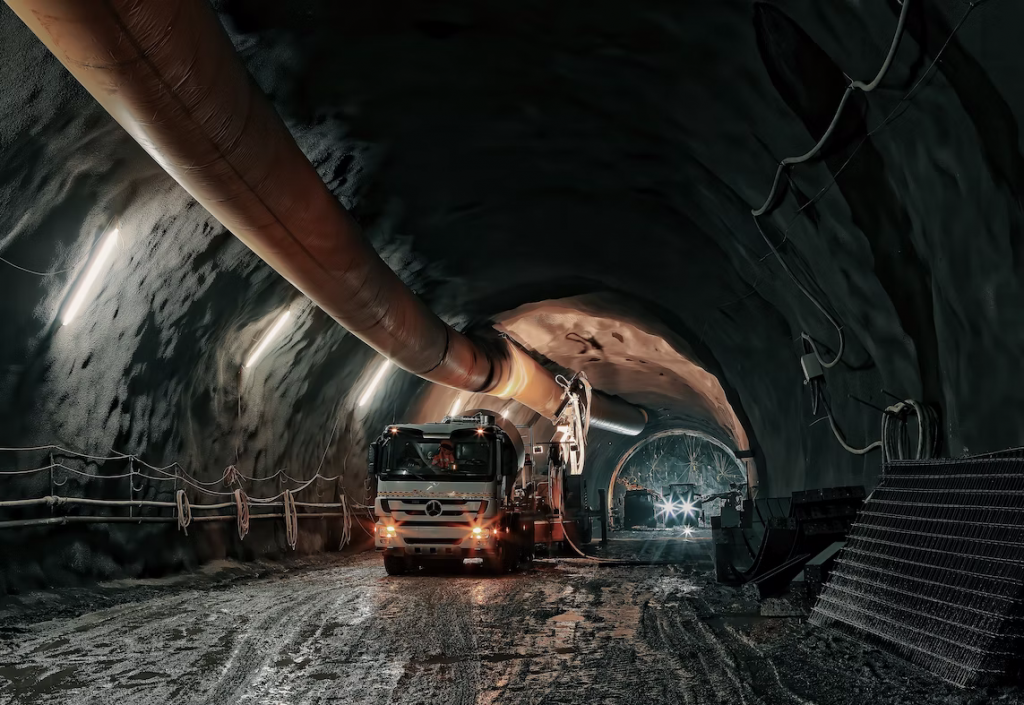As the mining industry transitions to a more environmentally friendly, automated, and remote-controlled approach, power is a challenge. Current batteries do not have the capacity for the heavy-duty work needed to extract ore and other materials from the earth. The heat, humidity, and generally harsh conditions of a mine are not conducive to battery longevity. As a result, sustainable mining efforts are uncoordinated, with a variety of approaches, from biodiesel to solar-powered mines. Future developments in electrification are set to overcome these barriers. So how will fast-charging batteries overhaul green mining?
Firstly, why does mining need electrification?
The court of public opinion
The mining and metals industry is under particular scrutiny to reduce its carbon footprint. Fracking, environmental disruption, and large, diesel-powered vehicles are what most laypersons think of when they hear the words mining. Where there is public opinion, governmental regulation is quick to follow. The industry needs to replace diesel as its primary power source quickly. Some operations and companies have already taken significant steps in electrification. The Diavik Diamond Mine produces the majority of its power using wind turbines, harnessing the power of arctic-circle winds. Glencore’s Raglan mine, located in Canada, goes a step further and stores this energy for windless days. Despite these innovations, the industry suffers from a lack of public relations. Sustainable technology in mining is simply not common knowledge.

So why is it not adopted?

There are practical reasons why some operations choose not to transition to electric mining. The mine may be located in an area that does not have access to sufficient power or a source of green energy. Overhauling a fleet of vehicles and equipment can be simply too costly in the short term. But the current largest bottleneck for electric mining vehicles is the battery. Particularly in deep mines, the logistics of charging and replacing batteries are simply too complex. Future Bridge has a more in-depth look at the possibilities and limitations of renewable energy in mining. The bottom line is that current technology is simply not a fit for every operation.
The advent of fast-charging battery technology
A collection of nine mining and energy companies are collaborating on a new, innovative battery system specifically designed for mining operations. The goal is to create a battery with more capacity than current units, backed up by innovative fast-charging technology. If successful, a 400kWh battery could be charged in 90 seconds by a 24MW power connection. Mining operations will also have access to more modular variants of the battery, to match any specific weight requirements. Skeleton Technologies, based in Estonia, plans to exclude cobalt, lithium, copper, or graphite to prevent the risk of explosions. And to nail the sustainability of electric mining, Skeleton Technologies will ensure the recyclability of the batteries. If this joint venture is successful, mining companies will have access to this technology by 2025.
What advantages does electric powered mining bring?
Implementation of this new battery technology can spearhead a transition from diesel to electric vehicles. With fewer moving parts and no emissions, electric vehicles will have lower maintenance costs in the future. Mines that already use fully electric fleets have found that they save up to 50% on ventilation costs and maintenance by moving away from diesel engines. Other benefits include fewer moving parts and reduced maintenance costs. As battery technology develops, operational costs will fall. Fire and noise, an ever-present danger in underground operations, are reduced when using electric alternatives to diesel. The mining industry should reap the benefits as the world transitions to electric vehicles in general.

What should mining companies do right now?
Companies in the mining and metals industry need to start making a roadmap for transitioning to sustainable operations. The initial buy-in of electric power infrastructure is still likely to be costly and full of hidden pitfalls. So how to build the best electrification project? First, learn from others. Exploring how other companies approach sustainable energy mining is a common-sense approach to avoiding concealed dangers. Second, explore upcoming technologies. Knowledge of what sort of equipment and capabilities may exist in the future can guide the planning process. Join key decision makers at the 2nd Energy Transition for the Metals and Mining Industry conference, on January 19-20th, in Toronto, Canada. Industry leaders will gather to discuss and exchange the best practices for implementing green fuel and sustainable infrastructure.
